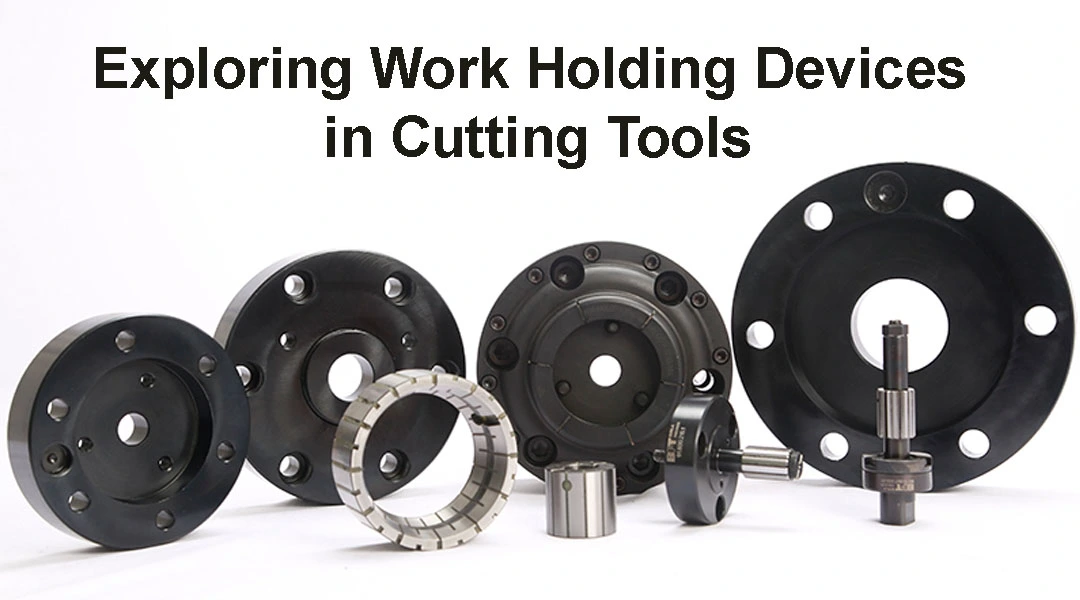Cutting tools are an indispensable part of machining processes, used in a wide range of industries, from manufacturing to automotive and aerospace. However, the effectiveness of cutting tools largely depends on the precision and stability with which the workpiece is held in place during the machining process. This is where work-holding devices come into play. In this blog post, we will be exploring work holding devices in cutting tools and their significance, their types, and their crucial role in achieving accurate and efficient machining operations.
The Importance of Work-Holding Devices
Work-holding devices are the essential components of any machining operation, as they secure the workpiece in place during cutting, milling, drilling, or other processes. Their significance lies in:
Precision: Work-holding devices ensure that the workpiece remains in the correct position and orientation, facilitating accurate and repeatable machining operations. This precision is vital for achieving tight tolerances and maintaining quality standards in manufacturing.
Safety: Proper work holding minimizes the risk of accidents, such as the workpiece slipping or being ejected during machining. A secure workpiece also protects operators and machinery.
Efficiency: Effective work-holding devices increase the efficiency of machining processes by reducing setup times and allowing for multiple cuts or operations on a single workpiece.
Types of Work-Holding Devices
There is a wide variety of work-holding devices available, each designed to suit specific machining tasks and workpiece shapes. Here are some common types:
Vises: Vises are versatile work-holding devices that come in various configurations, including bench vises, machine vises, and precision vises. They grip workpieces with adjustable jaws, allowing for secure clamping and precise positioning.
Collets and Chucks: Collets and chucks are used for holding cylindrical workpieces such as rods, shafts, and drills. They provide a uniform grip around the workpiece, ensuring concentricity.
Clamps and Bolts: These simple yet effective devices are used for holding irregularly shaped or oversized workpieces. Clamps and bolts can be quickly adjusted and tightened to secure the workpiece.
Magnetic Chucks: Magnetic chucks use magnetic force to hold ferrous workpieces in place. They are often used in surface grinding operations and other applications where clamping is challenging.
Fixtures: Fixtures are custom-designed work-holding devices used for specific parts and machining operations. They can be highly specialized to ensure precise positioning and stability.
Indexing Heads and Rotary Tables: These devices are used when workpieces require multiple machining operations at different angles. They provide controlled rotational movement for precise cutting.
Role in Achieving Accurate Machining
The primary role of work-holding devices in cutting tools is to maintain the workpiece’s position and orientation during machining. This function is critical for achieving accurate results and meeting tight tolerances. Without proper work holding, the cutting tool may not engage with the workpiece consistently, leading to imprecise cuts, surface finish issues, and scrap parts.
Work-holding devices also contribute to the reduction of vibrations and chatter during cutting operations. When workpieces are securely held in place, vibrations are minimized, resulting in a smoother and more efficient cutting process. This leads to better tool life and overall productivity.
Conclusion
Work-holding devices are an essential component of cutting tools, ensuring precision, safety, and efficiency in machining operations. Selecting the right work-holding device for a specific application is crucial for achieving accurate and high-quality results. By understanding the importance and types of work-holding devices, manufacturers can optimize their machining processes and deliver products that meet or exceed customer expectations.

